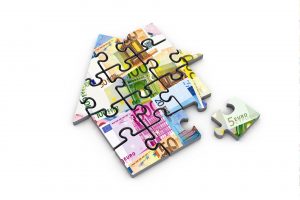If you’ve bought a shared ownership property you’re probably keen to own a greater share of that property. Staircasing is the way to do this. Staircasing is the process of buying greater shares of your property, up to 100% if your lease will allow. So how does this work? How long will staircasing take and how much will it cost? We answer all the frequently-asked questions about staircasing to give you a simple guide to owning more of your home.
FAQs
What does Staircasing mean?
Staircasing is the process of buying greater shares of a shared ownership property. Once you have owned it for a certain amount of time – stated in your lease but normally 1-2 years – you will be able to buy more shares.
As an example, if you own 25% of your home you will pay rent on the other 75% of the property. Staircasing could mean buying another 25% share (or ‘tranch’), meaning you would then own 50% and pay rent on the other 50%.
You could be able to continue this gradual process of buying more of your property, right up to 100% ownership if your lease allows. However, some providers do not allow you to purchase more than a certain percentage of your property.
How soon can you staircase with shared ownership?
Usually, you can staircase your shared ownership property after you have owned it for period of time. This is often one or two years, but these terms will be laid out in your lease. For example, if you had owned your property for two years, you could then buy another 10% share, or ‘tranch’ of the property.
How long does staircasing take?
The process of staircasing would usually take between 1-3 months for you to buy an additional share of your property. The length of time it would take you to staircase your way to full ownership would depend on the terms of your lease and your ability to raise enough money to buy extra shares in your property.
The property is valued each time you apply to buy an extra share. As a result, the amount of money needed to buy shares can change according to the value of the property at the time.
Read more
What is the staircasing process?
Firstly, you’ll need to let your housing provider know that you want to staircase. Then an independent surveyor will value your property – either your housing provider will organise this or give you a list of approved surveyors you can contact.
Once you have a valuation, you will be able to see how much the share you want to by will cost. So, if your property is valued at £400,000 and you want to buy another 10% share, this will cost you £40,000 plus fees.
Once you have a valuation, this will usually only remain valid for three months. You need to complete the transaction within this time, otherwise you will need a new valuation to proceed.
How much does staircasing cost?
As well as the price of the share you wish to buy, there are additional costs to staircasing. These include the cost of the valuation survey, your conveyancing fees, any stamp duty payable and any fees for your new mortgage.
What are the benefits of staircasing?
The main benefits of staircasing are that you’ll pay less rent and you benefit more from the property appreciating in value. Once you’ve staircased up to 100% ownership, you also have a better choice of mortgages and are able to sell the property on the open market – as long as your lease allows.
Can I buy 100% of a shared ownership property?
It depends on your lease whether you can buy 100% of your shared ownership property. Usually, you will need to have owned the property for some time (usually 1-2 years) before you can staircase at all. Some housing providers will allow you to buy 100% of the property, while others will not.
Do you need a solicitor for staircasing transactions?
Staircasing counts as a property transaction. As such there are various legal considerations, so you would typically employ a conveyancing solicitor to handle your staircasing transactions.
Do you pay stamp duty on staircasing transactions?
If you buy additional shares in a Shared Ownership property after the initial transaction, you don’t pay any stamp duty until you pass the threshold of 80% ownership of the property. Once you surpass 80% ownership of the property, you’ll need to fill in a return and pay stamp duty on the transaction that took you over 80% ownership and any further transactions.
HomeViews provides verified resident reviews of the UK’s housing developments. We’re working with developers, landlords and the Government to recognise high performers and help to improve standards in the built environment.
The post Shared Ownership Staircasing: Steps to owning 100% appeared first on HomeViews.

